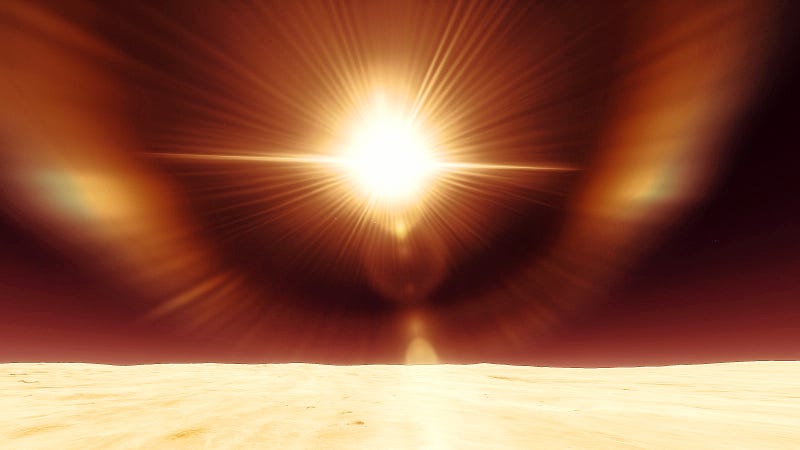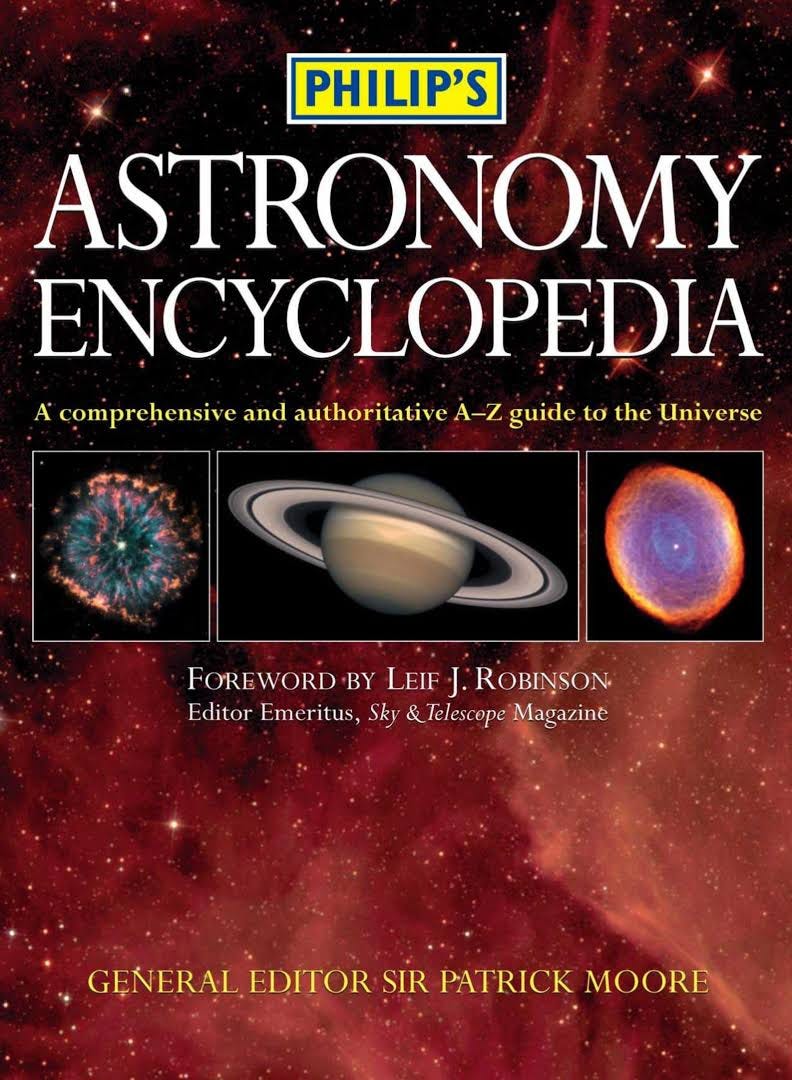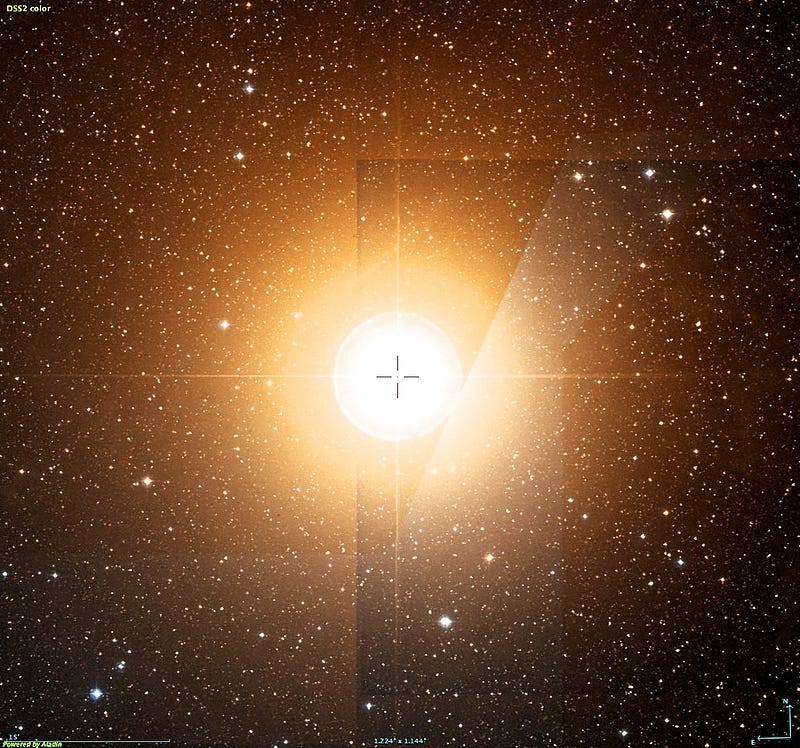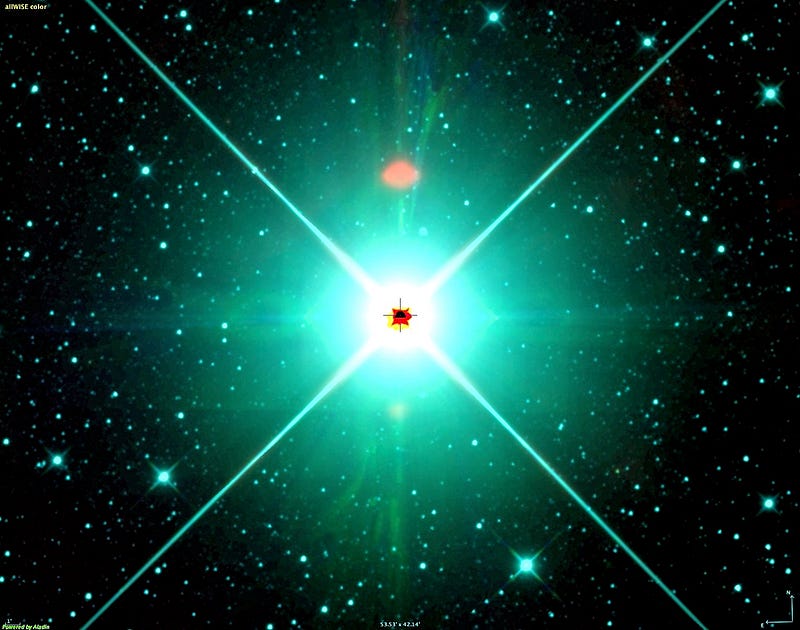Exploring Betelgeuse: Unraveling Its Distance and Mysteries
Written on

# Understanding Betelgeuse: A Challenge in Distance Measurement
Determining the precise distance to Betelgeuse has proven to be a daunting challenge. Despite extensive research spanning decades, the distance to this supergiant star remains uncertain.
Accurate distance measurements are crucial for deriving other key parameters, including diameter and absolute magnitude. However, measuring stellar distances is complex, particularly for a supergiant like Betelgeuse, which has a significantly larger angular diameter than the parallax angle measurable from Earth and varies continuously in brightness and size.
# The Fluctuating Distance of Betelgeuse
The uncertainty surrounding the distance affects all related parameters, including the star's diameter. This variability is evident in various sources that provide summarized information about Betelgeuse. Below is a compilation of these estimates.

According to Philip’s Astronomy Encyclopedia, Betelgeuse is located approximately 427 light-years away and has a diameter roughly 500 times that of the Sun (just under 700 million kilometers).
Conversely, the guide Navigating the Night Sky by Guilherme de Almeida (2005) suggests that Betelgeuse is smaller and closer, at only 350 light-years from Earth, with a diameter of 300 times that of the Sun (around 417 million kilometers).
The Microsoft Encarta encyclopedia, although not strictly academic, claims that Betelgeuse is even nearer at 300 light-years, with a diameter ranging between 419 and 580 million kilometers.
On the other hand, the prestigious Encyclopaedia Britannica asserts that Betelgeuse is approximately 640 light-years away and boasts a diameter about 950 times that of the Sun, translating to roughly 1.32 billion kilometers.
In An Introduction to the Sun and Stars (2004) by Simon F. Green and Mark H. Jones, it is noted that Betelgeuse is “nearly a thousand times larger than the Sun and 20 times more massive,” with an estimated distance of 131 parsecs, equating to about 427 light-years.
Finally, The Hundred Greatest Stars (2002) by James B. Kaler indicates that Betelgeuse is 430 light-years from Earth and 800 times larger than the Sun.
This array of figures only heightens our curiosity: just how far is Betelgeuse, really? Let's delve into what science reveals.
# The Challenging Science of Betelgeuse’s Distance
In August 1989, the European Space Agency's (ESA) Ariane 4 rocket launched the Hipparcos satellite into orbit. Over four years, Hipparcos conducted the most precise astrometric observations ever performed, measuring the parallax angle and proper motion of nearly 120,000 stars without the atmospheric distortions encountered on Earth. The mission's scientific findings were published in 1997, revealing that Hipparcos measured Betelgeuse's parallax angle as 7.63 mas (milliarcseconds). This corresponds to a distance of 131 parsecs, or 427 light-years, consistent with some previous estimates.
However, we must consider the margin of error reported in the Hipparcos catalog, which is ±1.64 mas. This leads to a potential distance range for Betelgeuse of 352 to 544 light-years.

In 2007, Dutch astronomer Floor van Leeuwen published a revised version of the Hipparcos catalog, yielding parallax measurements that were up to four times more accurate. The new parallax angle for Betelgeuse was 6.55 mas, with a reduced error margin of ±0.83 mas. This revision estimates Betelgeuse’s distance at 153 parsecs (498 light-years), with a possible range of 442 to 570 light-years.
While it seemed that Hipparcos had resolved the distance conundrum, a study published in The Astronomical Journal in April 2008 suggested a new distance estimate, adding around 200 light-years to the Hipparcos measurements. This research integrated Hipparcos data with radio measurements from the Very Large Array (VLA) of the National Radio Astronomy Observatory (NRAO). The authors concluded:
> Positions of Betelgeuse from high spatial resolution multi-wavelength VLA observations have led to a reduction in the parallax, and an increased distance compared to that measured by Hipparcos. Combining Hipparcos and VLA data yields a more robust result, estimating the distance at 200 pc, a compromise between the 131 pc Hipparcos distance and the radio measurement leaning towards 250 pc. Future radio measurements should refine this astrometric solution.
The final distance estimate from this study was 197 ± 45 parsecs, or about 642 light-years, allowing for a range from 495 to 789 light-years.
# Increasing Distance, Size, and Brightness
The most recent chapter in the quest to ascertain Betelgeuse's distance unfolded about two and a half years ago. In June 2017, a new study published in The Astronomical Journal combined data from Hipparcos and VLA with recent radio measurements obtained using the e-MERLIN and ALMA interferometers. The revised estimate of 222 parsecs came with an error margin of +48 and -34 parsecs, translating to 724 light-years, with a possible range from 613 to 880 light-years.
In summary, the estimated distance to Betelgeuse has consistently increased over the last two decades. The parallax measured by Hipparcos was likely overestimated due to the inherent challenges of gauging such a small angle in a bright, variable star with a large angular diameter. The recalibrations derived from VLA, e-MERLIN, and ALMA observations indicate that Betelgeuse may be even larger and brighter than previous calculations suggested.
Nevertheless, the determination of Betelgeuse’s distance remains imprecise. The launch of ESA’s new astrometric satellite, Gaia, aimed to revolutionize parallax measurements for over 1 billion stars in the Milky Way since 2013. Unfortunately, Betelgeuse's brightness seems to have hindered accurate measurements by Gaia. Its entry in the second catalog release from April 2018 remains unfilled. We await future Gaia catalog updates to see if accurate parallax data for Betelgeuse can eventually be provided. For now, our understanding of the distance to this red supergiant in Orion remains somewhat approximate.

# Notes
[1] HIP 27989 in the Hipparcos catalog.
[2] Specifically, 7.63+1.64 = 9.27 mas, and 7.63–1.64 = 5.99 mas.
This is the second part of a five-part series. Read the other four parts here:
- All About Betelgeuse: The Most Conspicuous Drop in Brightness From a Century Now
- All About Betelgeuse: How Big Is It?
- All About Betelgeuse: A Boiling and Asymmetrical Star
- All About Betelgeuse: Live Fast, Die Young